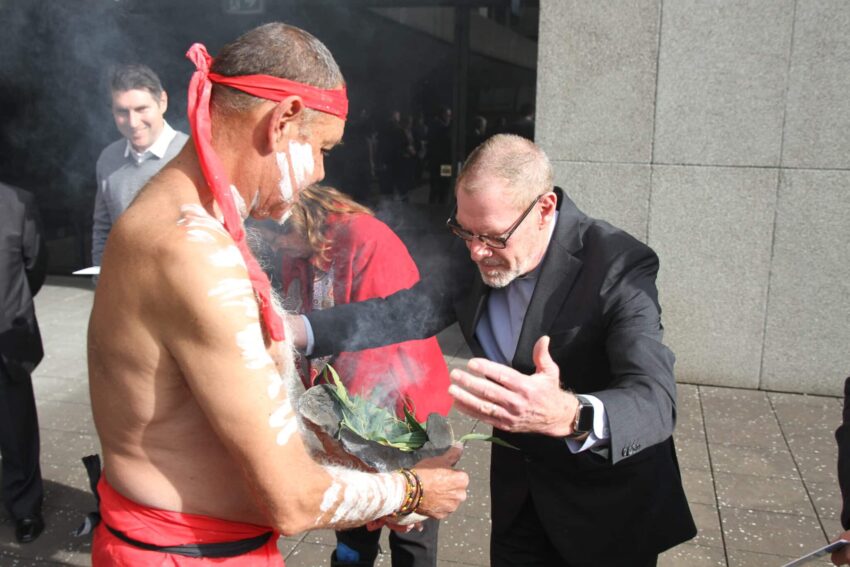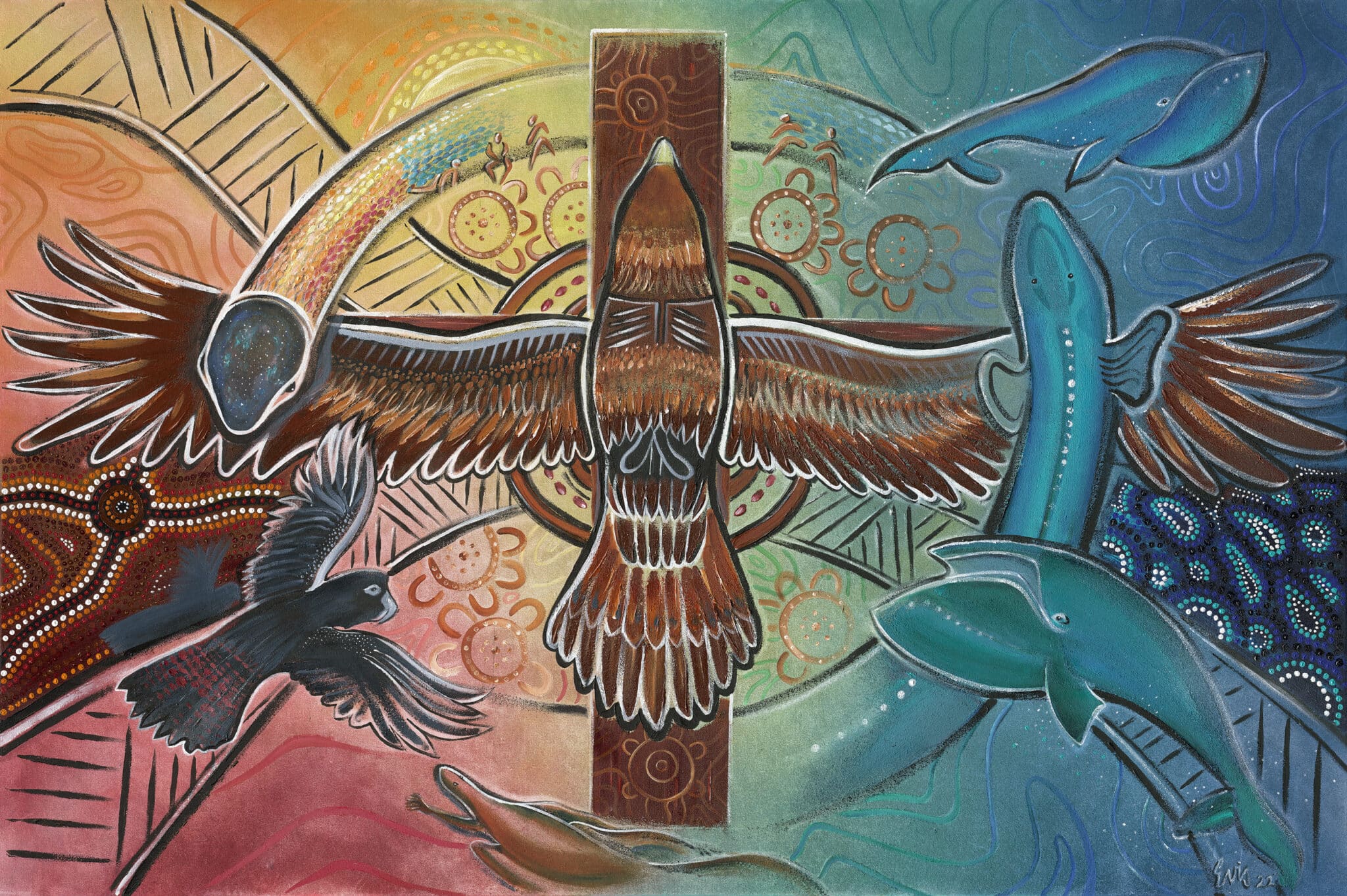
As we celebrate the historic official launch of the Archdiocese of Sydney’s “reflect” Reconciliation Action Plan (RAP) on 31 May, the middle of National Reconciliation Week (26 May to 2 June), this is a very significant moment to remember the church’s role in the lives of Australia’s First Peoples, the good and the bad.
It will be permanently commemorated by the inspiring artwork now prominent in the chancery foyer, provided by Richard Campbell and his nephew Evis Heath. Richard is a proud Gumbaynggir/Dhungatti man from Kempsey, and a member of the Stolen Generation, whose search for healing is integral to his art and his commitment to the work of the Kinchela Boys Home.
Richard’s artwork featured in World Youth Day 2008, and the Mary MacKillop Institute used two of his artworks, the Crucifixion and the Madonna and Child, in the canonisation ceremony of Saint Mary MacKillop.
Richard’s view is that “We all have a spiritual connection, we’re all brothers and sisters, with the animals, trees, rivers and rocks, we all belong to one big god—some call it Christ, we call it Birrigun, we are all one in God.”
Evis Heath is a second generation Gumbaynggirr and Birrpai artist originally from Newcastle, and he too has dedicated his life to creating art that expresses his soul’s Dreaming path, after being apprenticed to his two uncles, Richard Campbell and Mini Heath.
Since its establishment in Australia the Catholic Church has offered support for First People, and it has kept doing so over more than two centuries.
At the same time, there have been negative aspects to the church’s role, such as its part in the Stolen Generations, and the institutional abuses, all of which will need to be formally dealt with in a respectful community truth telling and listening process, followed by making amends.

And in the context of the referendum on the Voice to Parliament, reconciliation is a theme all Australians will benefit from embracing.
Already the church’s Plenary Council, and the Australian Catholic Bishops Conference, have expressed support for the Uluru Statement from the Heart, which seeks Voice, Treaty and Truth as the core areas for action.
This “reflect” RAP launch event begins a process that will take a number of years, to work with parishes and church agencies across the archdiocese on a series of follow-on RAPs, designed to listen to, learn from, and partner with Aboriginal and Torres Strait Islander peoples across the archdiocese.
Along with the head office and chancery of the archdiocese, Sydney Catholic Schools, Sydney Catholic Early Childhood Services, and CatholicCare are also now joining this shared “reflect” RAP process, even though some have already been developing their own RAPs prior to this combined work.
The idea to bring a shared cross-agency focus on establishing processes of reflection, truth-telling and relationship building under one initial RAP, combining the work of all these agencies, then each will continue separately to the next stages.
The CAS Reflect RAP states in its vision that:
“Catholics concerned about social justice, community mental health and wellbeing have as individuals begun moving towards reconciling the Church’s history with Aboriginal and Torres Strait Islander Peoples.
“Now, under the leadership of the Archbishop and the Executive Directors, this single overarching Reflect RAP has been developed to guide the agencies, parishes and schools of the Archdiocese to contribute to reconciliation. In the next 12 months we will listen to Aboriginal and Torres Strait Islander Peoples and learn and understand the role that each of our unique agencies can contribute to reconciliation.
“Over time, we anticipate that many of our agencies will begin to develop their own Innovate RAPs that work in collaboration and in symmetry with the Archdiocese. This RAP will help our Catholic communities in parishes, schools and agencies acknowledge and celebrate Aboriginal and Torres Strait Islander peoples’ cultures and relationships to Country.”
So there is work to be done by all of us, in engaging with First People at the local level, and exploring how we can partner to develop positive futures, while acknowledging and reconciling those matters that have been the source of suffering for First People.
There are four progressive steps in the RAP journey, and each one goes deeper into organisational engagement with partnering for positive change and development. “Reflect,” “innovate,” “stretch” and “elevate” RAPs all indicate deepening levels of partnership for mutual benefit.
Dr Robbie Lloyd works as a Social Justice Facilitator with the Justice and Peace Office of the Catholic Archdiocese of Sydney. He is also a community mental health and wellbeing professional who has worked in urban, regional and remote settings with Aboriginal and Torres Strait Islander communities for the past 30 years, including the remote communities of Wadeye, Nauiyu, the Tiwi Islands and Santa Teresa in the Northern Territory.
